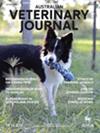Feline immunodeficiency virus (FIV) is a highly mutable retrovirus with numerous species-specific strains, such as those infecting domestic cats (Felis catus, FIVFca) and wild populations of nondomestic cats including lions (Panthera leo, FIVPle). When FIVFca infection manifests as disease in domestic cats, common presentations include lymphadenopathy, lymphoid malignancies, oral cavity disease, immunological dysfunctions and neurological abnormalities. In contrast to domestic cats, there has been little published evidence of direct FIVPle disease associations in lions. The objective of the study, therefore, was to conduct a longitudinal case–control comparison of clinical findings and survival analysis of FIVPle-infected and FIVPle-uninfected captive lions to investigate possible FIVPle disease associations in nondomestic felids in Australia.
Between 2005 and 2023, 38 lions were recruited from zoos across Australia. Lions had been FIV tested as part of a routine diagnostic service. The 38 lions included in the study comprised 15 FIV-infected (9 males, 6 females) and 23 FIV-uninfected (9 males, 14 females) animals. Lifetime longitudinal clinical histories and clinicopathological data collected by zoos for these lions were interrogated, including survival data.
FIV-infected lions were more likely to be reported with lower mean corpuscular volume (MCV) (fL) (P = 0.015), monocytes (%) (P = 0.023), chloride (mmol/L) (P = 0.016) and phosphate (mmol/L) (P = 0.029), but with a higher mean corpuscular hemoglobin concentration (MCHC) (g/L) (P = 0.001) and bicarbonate (mmol/L) (P = 0.035), than FIV-uninfected lions. The disease associations usually seen in domestic cats with FIV infection were not observed in lions, and there was no difference in survival between FIV-infected and FIV-uninfected lions. The main limitation of the study was a small sample size dictated by the number of lions able to be recruited from zoos in Australia over an 18-year period.
Few differences were found between case and control groups, suggesting that FIV-infected lions did not experience clinicopathological changes that predisposed them to future disease compared with FIV-uninfected lions. Further research will help to determine whether these results are indicative of a general absence of FIV-associated disease in captive lions, or the result of nonpathogenic FIVPle subtype(s) present in Australia.


